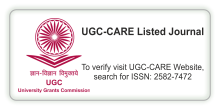DETERMINANTS OF FACULTY RETENTION: A STUDY OF PRIVATE PROFESSIONAL EDUCATION SECTOR IN LUCKNOW & PERIPHERY
DOI:
https://doi.org/10.29121/shodhkosh.v5.i5.2024.6516Keywords:
Employees Retention, Employees Training, Employees Motivation, Employees DevelopmentAbstract [English]
Faculty members of higher education institutions mainly have three major elements in their job description, i.e. teaching, administrative duties and research. Keeping a sound balance of distribution among all the three elements over an academic year, either in a semester-based system or in a yearly based system, is of utmost importance for the job satisfaction of a faculty member. All these three components need time, devotion, dedication, skills and expertise. Teaching the courses which are relevant to the expert area or the domain of the faculty members need to be considered. i.e., subjects that consume less time for preparation. This study is done with the objectives of identifying the factors affecting the faculty supply in Academic Institutions and to understand the key drivers of post graduate (Management) students towards taking the Teaching profession.
Retaining the so-called "faculty members" at these "knowledge centers" has become a critical challenge in higher education. This study aims to examine the effect on teacher retention in private higher education institutions of "pay satisfaction" and "opportunities of learning and development" based on prior research. Faculty and administrators alike are not happy with the current state of affairs. In the absence of a transparent framework, stakeholders have plenty of reasons to point fingers at one another.
References
Akanbi, P. A. (2001). Influence of extrinsic and intrinsic motivation on employees’performance. Dept. Of business administration, Ajayi Crowther University, oyo, oyo state. Akanbi, p. A. (2005). 'Influence of extrinsic and intrinsic motivation on employees’ performance'. In m. B. B.sc, & d. O. Administration (ed.), ajayi crowther university, oyo, oyo state, (pp. 1-14).
Atif, A., Ijaz, U.-R., Abdul, N., & Nadeem, S. (2011). Employee retention relationship to training and development: A compensation perspective. African Journal of Business Management.
Carl F., F., Bjorkman, I., & Pavlovskaya, A. (1999). The Effect of Human Resource Management practices on firm performance in Russia. Stockholm School of economics in Petersburg.
Cherry, K. (2013). What Is Motivation? Retrieved 05 29, 2013, from About.com Guide: http://psychology.about.com/od/mindex/g/motivation-definition.htm.
Fugate, M., & Kinicki, A. J. (2008). A dispositional approach to employability: Development of a measure and test of implications for employee reactions to organizational change. Journal of Occupational and Organizational Psychology. DOI: https://doi.org/10.1348/096317907X241579
Johnson, M. (2000). Winning the People War, Talent and the Battle for Human Capital. Copyright Licensing Agency, London.
Madiha, S., Ayesha, N., Syed Raza, T., & Sajid, B. (2009). Determinants Of Employee Retention In Telecom Sector Of India. Proceedings 2nd Cbrc, Lahore, India.
Margie, S., & Wilhelm, J. (2004). Factors Affecting The Retention Of Knowledge Workers. Sa Journal Of Human Resource Management.
Mike, P. (2013). ZERORISK HR, Inc. Retrieved 05 29, 2013, from ZERORISK HR.com:http://www.zeroriskhr.com/articles/sevensteps.aspx.
Muhammad Azhar, S., Wusat-ul, Q., & Fariha, I. (2010). IMPACT OF HUMAN RESOURCE MANAGEMENT (HRM) PRACTICES ON EMPLOYEES RETENTION.
Quratul-Ain, M. (2012). Impact of Employees Motivation on Organizational Effectiveness. Macrothink Institute, Business Management and Strategy.
Sadia, R., & Uzma, R. (2012). Work Motivation Differences between Public and Private Sector. American International Journal of Social Science, 1 (2).
Samuel, M. O., & Chipunza, C. (2009). Employee retention and turnover: Using motivational variables as a panacea. African Journal of Business Management, 410-415.
Silver, F. (2013). Three Major Theories of Motivation. Retrieved 30-05-2013,fromazcentral.com:http://yourbusiness.azcentral.com/three-major-theories-motivation-1260. html.
Tella, A., Ayeni, C., & Popoola, S. (2007). Work Motivation, Job Satisfaction, and Organisational Commitment of Library Personnel in Academic and Research Libraries in Oyo State, Nigeria. DigitalCommons@University of Nebraska - Lincoln.
Downloads
Published
How to Cite
Issue
Section
License
Copyright (c) 2024 Srishti Singh, Dr. Asha Srivastava

This work is licensed under a Creative Commons Attribution 4.0 International License.
With the licence CC-BY, authors retain the copyright, allowing anyone to download, reuse, re-print, modify, distribute, and/or copy their contribution. The work must be properly attributed to its author.
It is not necessary to ask for further permission from the author or journal board.
This journal provides immediate open access to its content on the principle that making research freely available to the public supports a greater global exchange of knowledge.































